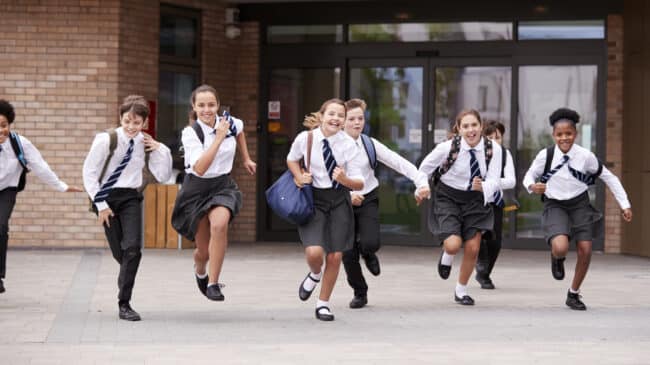Summary
Kentucky Amendment 2 would authorize the legislature to fund K-12 students outside of the traditional public schools.
Amendment 2 would allow the legislature to fund alternative schools like charter schools or provide tax-credit scholarships, vouchers, or education savings accounts that families could use at schools they chose, including private schools.
Fiscal Impact
This amendment has no direct fiscal impact.
Proponents’ Arguments
Proponents argue that this measure is necessary since it will create an environment whereby families can choose their children’s schools. Until now, the government has assigned students to their schools based on where they live. If this amendment passes, the legislature could fund education options other than traditional public schools, such as charter schools, tax-credit scholarships, vouchers, or education savings accounts. This could create a fairer system since students and their parents could select schools outside the state’s traditional public school system that are a better fit, giving families agency in school selection. Parents know what is best for their children, including which schools are the right fit.
Moreover, this reform would remove the 130-year-old “handcuffs” binding legislators today and prevent them from funding alternative schools or school choice. Freed of these constrictions, Kentucky policymakers can pass education laws supported by the people who elected them.
Opponents’ Arguments
Opponents argue that Amendment 2 would let policymakers divert funds from public schools, investing in private schools that are unaccountable to taxpayers. Experience from other states that have passed such laws finds that the fiscal costs associated with vouchers are high, often ballooning more than estimated projections, and they subsidize the education costs of existing private school students at the expense of public school students. Moreover, these new costs will especially hurt rural public schools, which are already in need of additional funding.
Critics argue that, ultimately, the amendment would undermine K-12 public education, the backbone of Kentucky’s communities. Voting against it will protect the state’s public schools, taxpayer dollars, and local communities.
Discussion
Families in Kentucky have limited educational options if they cannot afford to pay for private education. This means that even though Kentucky law requires parents to send their children to school, they often lack real education options other than their assigned schools. Many families use school choice policies to attend schools that are a better fit, reflect their religious convictions, are safer, or have better academics. Kentucky should ensure that families have a diverse array of choices for how to use state funding for their child’s education, even if that is to send them to a religious school. Amendment 2 would be a step in the right direction since it would let the legislature direct public funds to schools outside of traditional public schools.
Private school choice programs offer an array of benefits, such as access to safer schools, better academics, or increased graduation rates. As of 2023, 84% of the 187 studies on private school choice programs showed positive effects, 10% showed null effects, and only 6% showed negative effects. At the same time, competition between private and public schools can encourage schools to improve, benefitting both private and public school students.
Moreover, a 2021 analysis of Florida’s tax-credit scholarship program traced the program’s effects on students for 15 years. Most notably, the report found that the private school choice program benefitted public school students’ behavior and academics. While all students benefitted, low-income students showed the most improvement. The authors attribute these gains to the ripple effects of competition, which encourage all schools to improve.
While private schools don’t have the same bureaucratic accountability required of public schools, they face a more immediate form of public accountability: parents who can take their education dollars to a competitor. Private schools that fail to meet the needs of students close since dissatisfied families leave.
The additional cost of school choice programs depends on varying factors, such as appropriations, student eligibility, and program type. For instance, a universal voucher could initially increase costs as current private school students use it. However, a universal tax-credit scholarship, like the one proposed in 2022, would not incur increased costs to taxpayers since the accounts are funded by tax-free donations.
Fears that school choice policies will destroy local communities are overwrought. Most public schools, including rural ones, already compete with nearby private schools for students. In fact, seven in 10 students living in rural areas live within 10 miles of a private elementary school. Data from states with robust school choice programs show that public schools can successfully navigate a more competitive education marketplace. For instance, since charter schools were introduced in Arizona 30 years ago, the state has only consolidated rural school districts in two counties, closed one school district (which had no charter or private schools in it), and created one new school district. This illustrates that school choice is not a death knell for public schools or their communities.

